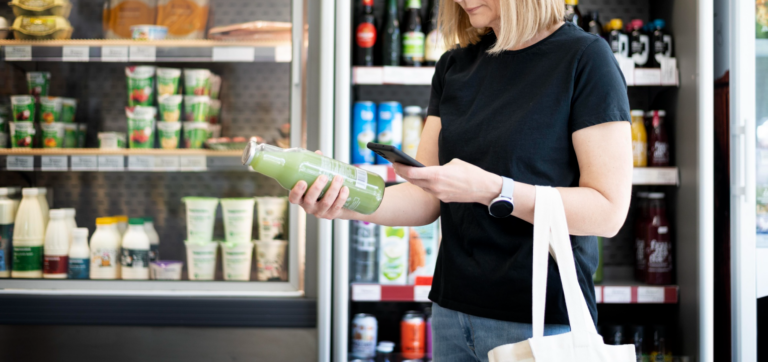The adoption of mobile self-checkout technology has been rapid and widespread. By empowering customers to use their smartphones for scanning and payment, retailers have revolutionized shopping efficiency. This shift is not just about cutting hardware costs – it is also about elevating the customer experience. Integrated loyalty programs, instant access to product information, and the elimination of traditional checkout lines are just a few benefits of this technology.
However, the convenience of Scan & Go shopping brings with it a heightened risk of shoplifting. The impersonal nature of self-service systems can inadvertently lower inhibitions, making theft a pressing issue for retailers.
Understanding shoplifting at self-checkout
Shoplifting is a complex problem, and meaningfully addressing self-checkout theft requires a deep understanding of its causes.
These causes encompass a range of behaviors and motivations. Some individuals shoplift due to financial distress, while others are driven by the thrill of the act. Yet others feel that their actions are inconsequential against large retail entities.
The design of self-checkout systems, which often lack the human oversight of traditional checkouts, can inadvertently facilitate shoplifting. The absence of a cashier or frustration with malfunctioning equipment can embolden individuals who might not otherwise engage in theft.
This phenomenon, often referred to as “Scan & Go shoplifting,” is a unique challenge for retailers.
Tackling the challenge of shoplifting at self-checkout
Combatting self-checkout theft requires a combination of technological innovation with in-store practices. Retailers must carefully weigh their need to prevent losses against the desire to maintain a seamless shopping experience for honest customers. This balance is key in deterring theft while retaining the advantages of self-checkout systems.
Strategies to combat self-checkout theft
In the face of growing concerns around self-checkout theft, retailers must adopt innovative and effective strategies. These strategies should address the unique challenges presented by self-service technologies, particularly focusing on preventing Scan & Go shoplifting.
1. Enhanced customer identification:
One effective deterrent against self-checkout theft is robust customer identification. By requiring customers to register with personal details such as name, email, and payment information before using mobile self-checkout, retailers can significantly reduce anonymity and thus discourage shoplifting. Retailers could also consider integrating biometric verification for added security.
2. Strategic communication & expectation setting:
Clear communication is vital in mitigating the risks of shoplifting at self-checkout. Retailers can leverage their mobile apps to inform customers about the proper use of self-checkout systems and the implications of shoplifting. Regular reminders, such as prompts to verify that all items have been scanned properly, can reinforce honest behavior.
3. Implementing a spot-check system:
A well-planned spot-check system is a significant deterrent to potential shoplifters. Retailers can use data analytics to identify patterns that may indicate suspicious activity and conduct spot checks accordingly.
These checks should be conducted in a manner that is respectful and non-accusatory, ensuring that customers see them as a standard procedure. Customers should not feel like they are actively being suspected of theft.
4. Optimizing software functionality:
The user experience of the mobile self-checkout app is crucial in preventing theft. A user-friendly interface that makes scanning and payment easy can reduce customer frustration, which is often a trigger for opportunistic theft.
Retailers must ensure that their self-checkout app can reliably scan any barcode, including those that are small, wrinkled, or otherwise difficult to scan.
Prevention and education: Key to reducing self-checkout theft
To ensure these strategies are effective, retailers should invest in employee training and customer education. Employees should be well-versed in the features of the self-checkout system and trained to handle suspected shoplifting professionally.
Customer education campaigns can also play a crucial role in reducing theft. By informing customers about the benefits of self-checkout systems and the consequences of shoplifting, retailers can create a safer shopping environment.
Conclusion
The shift towards self-service retail systems like mobile self-checkout requires retailers to handle the specific challenges of self-checkout theft.
By implementing strategic measures such as enhanced customer identification, clear communication, spot checks, and optimized software, retailers can significantly mitigate the risk of Scan & Go shoplifting. Moreover, a focus on prevention through employee training and customer education is essential.
These strategies, when effectively executed, not only deter theft but also enhance the overall shopping experience. This ensures that self-checkout remains a valuable asset for retailers.
Would you like to add reliable Barcode Scanning technology to your retail app? With the Scanbot SDK, you can build a smooth Scan & Go experience. Our experts are looking forward to discussing your use case with you. Let’s talk.
What is self-checkout theft?
Self-checkout theft is the act of stealing goods from a retail store using self-service checkout systems. This includes not scanning items intentionally, under-scanning, or exploiting system vulnerabilities to avoid payment. It’s a growing concern in the era of advanced retail technologies like mobile self-checkout.
How common is shoplifting at self-checkout?
Shoplifting at self-checkout is increasingly common. The impersonal nature and lack of human supervision in these systems makes it easier for individuals to commit theft.
What are the main causes of Scan & Go shoplifting?
The main causes of Scan & Go shoplifting include the ease of bypassing traditional cashier oversight, frustrating malfunctions, and the perception that self-service theft is less risky or harmful. Personal causes include financial distress or thrill-seeking.
Are there specific strategies retailers can employ to reduce theft in mobile self-checkout systems?
Retailers can employ several strategies to reduce theft in mobile self-checkout systems, such as implementing robust customer identification, clear and consistent communication about self-checkout use, effective spot checks, and optimizing the functionality of their mobile apps.



